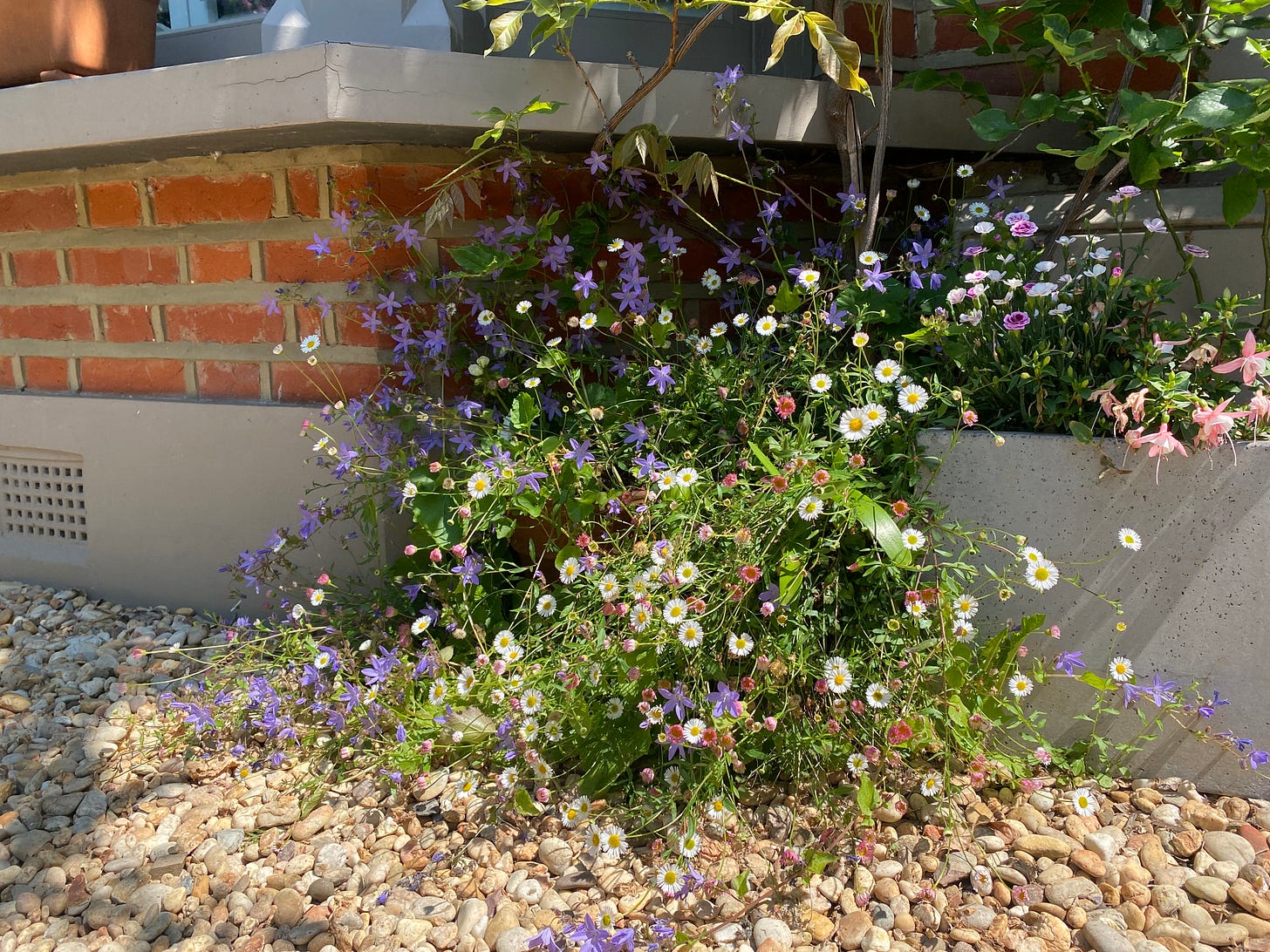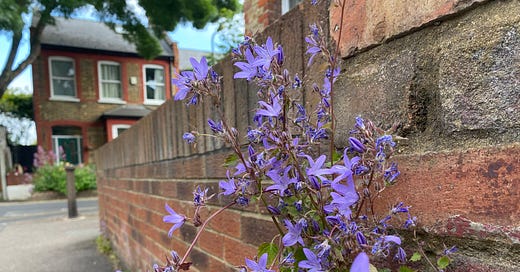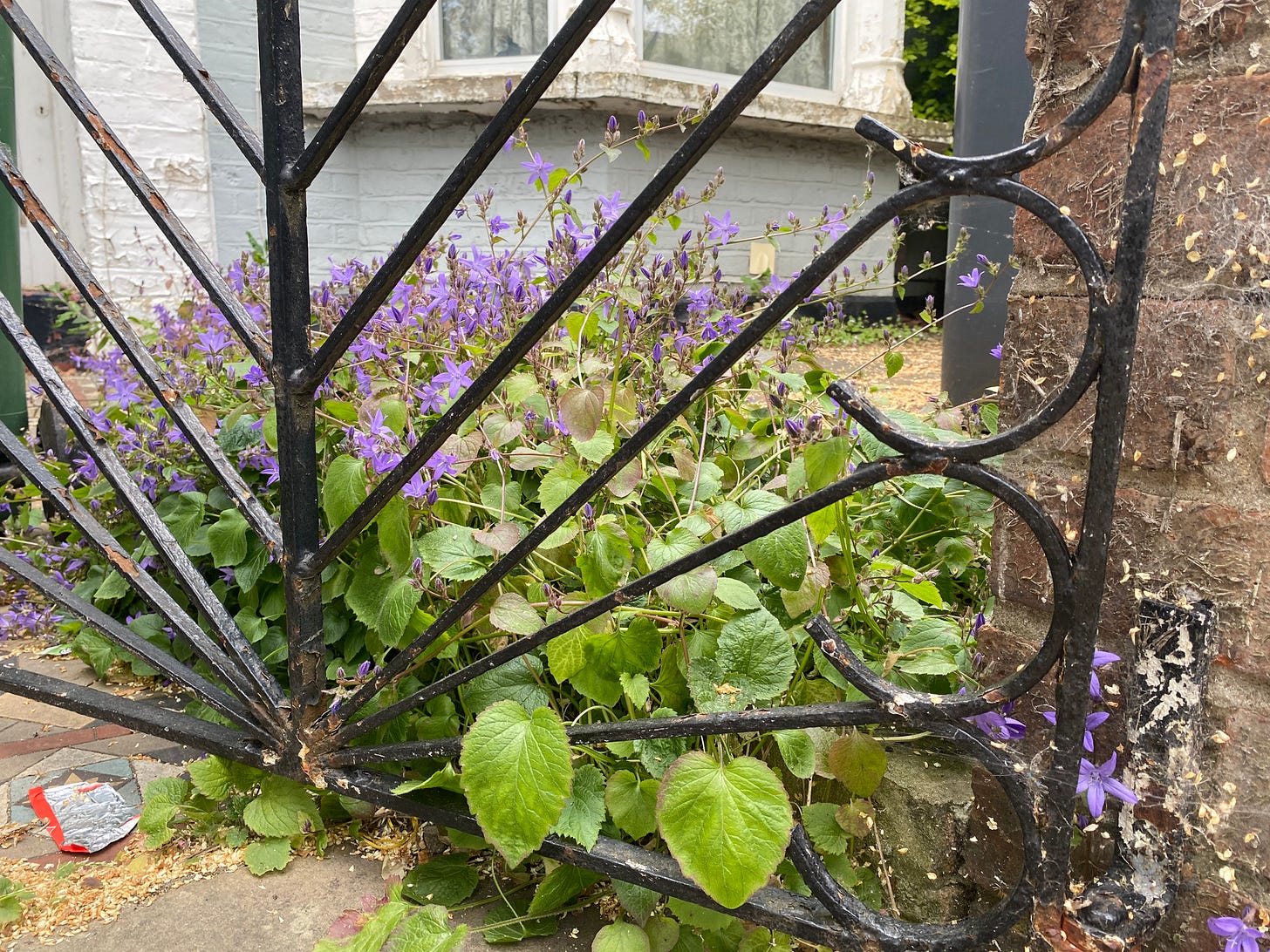Green streets, mean streets, sight unseen streets
Why I learned to love the overlooked pioneer plants laying down roots in the most unlikely places
Hello, you’re reading The Earthworm, an alternative gardening newsletter that takes a sideways look at the world of plants. The Earthworm is an independent, reader-supported newsletter. That means no ads, no sponsored content, and no editorial direction from anyone other than yours truly. If you enjoy this newsletter and would like to support the work I do here, then why not share this post with a friend? Thanks for reading.
When did you fall in love with plants? It’s a bit of a trick question, really. I imagine the number of people who experience a single, romcom-style, love-at-first-sight moment is few and far between.
Can you imagine: you’re on your way to work, bustling your way through crowds of commuters when – yikes! – your foot catches on an errant root, sending you hurtling over onto your bottom. Then, as you pick yourself up and dust yourself down, preparing to fire an onslaught of expletives at the good-for-nothing Silver Birch root responsible for your fall, your eyes meet its sun-dappled canopy; its softly swaying branches; its sensuous, tactile bark. Be still your beating heart!
No. For most of us, our admiration and appreciation of plants and the natural world develops as more of a slow burn. Regardless, once you begin to love plants as I do – and as you may well too – it changes the way you see the world around you. Because you come to realise the bleeding obvious: plants are absolutely everywhere.
This is particularly to be celebrated in an urban context. A decade ago, on a typical daily walk from my front door to the Underground station, I would have noticed the unsmiling people, the standstill traffic, the fly-tipped mattresses, and the drifts of energy drink cans, crisp packets, cigarette butts and other frequently flung items littering the cold grey pavement.
Of course, I still see all this. But these days, it is as though I’ve pulled on a pair of superhero specs, revealing a dazzling new dimension, a whole new layer of beauty and interest. Now, every journey to the station is a nature walk; an impromptu tree identification refresher; a front garden design masterclass.
Best and most beloved of all are the wild plants. Yeah, the “weeds”. The volunteers and pioneers who weren’t planted by human hand, but found their own way to bring beauty and biodiversity into this world. I notice the neglected red brick railway arches painted green with moss; the Sycamore seeds spinning to earth like freefalling helicopters; the hart’s tongue fern clinging on by a thread to the finest of cracks in a vertical wall, like a harness-less climber free soloing up a cliff face.
There are a few plants in my northeast London neighbourhood that have self-seeded their way into just about every pavement crack and untended front garden I pass. Yellow corydalis is a jolly little plant, whose bright yellow trumpet-like flowers are native to the foothills of the Alps, but have made themselves quite at home here in east London. The usual range of willowherbs, fleabanes and dandelions too can be found in profusion.
But my very favourite is without a doubt Campanula poscharskyana, aka trailing bellflower (pictured throughout this post). It’s a good thing, really, that I love it so much, because during its long flowering season, there is really no avoiding it, nor its constellations of star-shaped violet blooms. It is, like so many street plants or so-called weeds, one that has historically been cultivated and sold for use in our gardens – as groundcover or to tumble elegantly out of pots – but proved too free of spirit to be contained in a domestic setting.

As the days shorten and the temperatures drop, just a few of these trailing bellflowers are still stubbornly clinging onto their blooms. But I am so grateful to them, and to their pavement crack-colonising cousins, for sharing their treasures with me.
It is commonplace in London – and, sadly, towns and cities the world over – for the street plant population to be “managed” with the use of glyphosate and other cheaply available herbicides. This doesn’t just make our urban environments less interesting and attractive places to live, but has a knock-on effect on wildlife – which is deprived of food sources and habitat – not to mention other downstream downsides for people, plants and animals of all sizes.
It’s a sad fact that using chemical herbicides, indiscriminate and damaging as they are, is simply a more cost- and time-effective way of removing unwanted plants from the streetscape than employing teams of plant-aware gardeners. As such, any trailing bellflower encroaching on the public domain is sprayed to oblivion.
No longer. Not on my road, anyway. Thanks to the efforts of local residents, ours is now a Bee Friendly Street. This means that the management of pavement and roadside plants is now in the hands of local residents, not council sprayers. This is a big win for all (or at least most) parties.
Plants, as long as they aren’t trip hazards or drain blockers or some other obvious nuisance, are allowed to get on with their life cycles. Bees and a great many other beasties are able to find forage and shelter here. And, selfishly speaking, we humans are able to enjoy it all. Everyone’s a winner (except, I appreciate, the council-employed sprayers, who I hope are redeployed in other less damaging horticultural capacities).
If your local area is kept “weed-free” with the use of herbicides, why not look into whether your local council does – or could be convinced to – offer a Bee Friendly Street scheme, or equivalent?
Is there a plant that has made itself especially at home in the streets where you live? Is a particular pioneer plant your favourite? Share the love with the Earthworm community and leave a comment below! I read and reply to every one.







Growing up in New York City, I learned some names of wild plants from my mother. One of her favorites was Butter-and-Eggs, blooming in late summer, a small flower colored like its name. Another wild flower in the US is Goldenrod, growing everywhere, in salty dunes with whippy grasses, or in vacant lots with Japanese Knotweed (in the US an "invasive," in east Asia, a valuable longevity herb).
In Massachusetts, glyphosate is soon to be illegal. It is a powerful carcinogen. Of course, then the community will have to initiate a new campaign against the next new, even deadlier, poison.
I have contemplated a guerrilla campaign whereby I print up small signs and stakes and label natives growing wild in town so they are not indiscriminately mowed down as weeds. The Bee Friendly Street concept is a better idea.